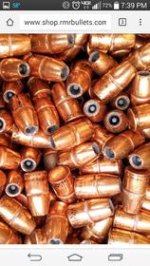The standard overall length for the 357 Magnum is 1.590 inch and I don't see any risk at all in loading a bit "long". In fact with smokeless powders it's probably that loading longer will act to reduce pressure by a small amount.
As for your charge amount, I would start low and work up cautiously. A typical indicator of excess pressure in a 357 Magnum is Sticky Extraction. Don't rely on "reading" you primers, it's been my experience that extraction starts to get sticky well before the primers start to show any sign of flattening.
Note, it's also been my experience that in spite of what you read on the Net you can load H110/W296 distinctly "light" without issues as long as you use a Magnum Primer AND use a firm crimp on the bullet. My most accurate load for my 1892 Winchester features a 158 grain Hornady XTP loaded with 14.8 grains of H110. Take a look an Hodgdon's data and you'll find that charge is actually BELOW the listed starting charge for this bullet. I'll also point out that the original source for this particular load was the Hornady manual and I've found this manual is a better source for guidance on loads that are truly accurate instead of being foolishly "hot".
Finally, I am NOT a fan of H110/W296 for handgun loads, I find to too flashy and plain LOUD. Where I think this powder really shines is in rifle loads, such as my Winchester and my 300 Blackout. Used in a barrel long enough for the slow burn rate of this powder you get a very clean shooting low flash load that is very accurate. However, since you seem to want a high flash load for pulverizing Pumpkins I expect that this powder is just what you are looking for. I would simply suggest that you double up on the hearing protection because out of that 2 inch barrel of yours there will be enough BAHOOOM to the report to make you check twice to see if you blew up your gun. Note, 125 grain XTP combined with 21.5 grains of H110 out of a 4 inch barrel will produce a reported 25 foot muzzle flash and BAHOOOM volume to make a 500 Magnum user flinch. I'll also state I won't repeat that particular experiment, just 15 rounds put a distinctly measurable groove in a top strap that was nearly virgin.


